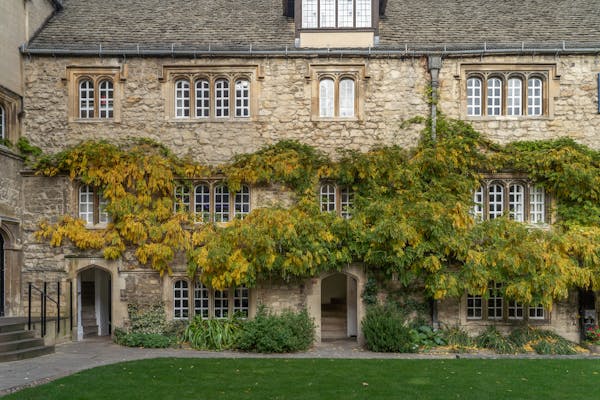The origins of Canadian culture and identity are tangled and knotted, but if you dig deeply, some surprising roots are revealed.
Revisionist authors as widely divergent as McGill’s Bruce Trigger (Children of Aataenisic), feminist Paula Gunn Allen (Who Is Your Mother? The Red Roots of White Feminism), and popular writers like Ronald Wright (Stolen Continents), are revealing the extent to which the genesis of our culture is grounded in native society.
We have always been led to believe that the richness of our culture is a product of the glory and achievement of Western civilization. It is humbling to realize that it is not as simple as that.
Our social safety net, our ability and reputation as mediators, conciliators and peacekeepers, and our democratic freedoms enshrined in our federal system of government are three of the many conceptions of our cultural identity that intertwine and overlap to create a whole greater than the sum of the parts.
While these are considered sophisticated products of a European heritage, it is instructive to consider that they may also be deeply rooted in native societies.
The Hurons, for example, like other Iroquoian tribes, looked after their own from the cradle to the grave in a manner that smacks of our Canadian safety net.
When Etienne Brule wintered with the Hurons on the shores of Georgian Bay in 1610, Champlain guaranteed his safety by sending a Huron chief’s son to Paris for the winter. When the young man returned and was asked what Paris was like, he explained to his disbelieving tribesmen that people in Paris begged for food on the streets. That a society allowed this to happen was incomprehensible to the Hurons.
He also described the appalling manner in which children were harnessed, spanked, and beaten publicly, and the way citizens were punished or executed in public squares in the early 1600s. To the Hurons, the Europeans were savages.
Montaigne, the French philosopher whose writings strongly influenced the struggle for liberty, justice, and equality in Europe and elsewhere, acknowledged the commentaries of other Iroquoian visitors during the colonial era, who were shocked by the gross inequities they observed between the rich and poor in Europe.
An ethnology of Iroquoian society written by Lewis Henry Morgan in 1851 was a popular treatise in Europe at the time. It outlined in some detail the workings of a matricentral society with an egalitarian distribution of goods and power, a peaceful ordering of society and the right of every member to participate in the work and benefits of the society.
Friedrich Engels reacted excitedly to this text: “This gentile constitution is wonderful! There can be no poor… All are free and equal – including women.”
Certainly Karl Marx and other socialist thinkers at the time were similarly profoundly influenced by Morgan’s ethnology. Marx’s evolving ideas of female equality and women’s liberation for example, though never achieved in practice, were fundamental to his socialist theories and can be clearly traced to the impact of his reading of Morgan’s ethnology about the role of women in Iroquois society.
How these values informed Canadian identity is evident to this day. One of our most enduring qualities is our historic ability to mediate disparate points of view. Canada’s evolution is a wonder of nation building. This immense land, with a divisive geography and a harsh climate, was united without military revolution, civil war, or a war for independence.
The skills to achieve this remarkable feat have stood us in good stead internationally. Canada has long had a reputation as a peacekeeper for the world and we perceive ourselves that way. Canada’s leadership and commitment to the United Nations, exemplified by Lester B. Pearson’s Nobel Peace Prize, and our undiminished involvement as a peacekeeping force, are evidence of our conciliatory skills honed in national building at home.
Confederation, itself, epitomizes our ability to unify a wide variety of disparate interests. We normally attribute this to the evolution of democracy and the parliamentary system, a crowning achievement of Western civilization.
But the Iroquoian Confederacy, a political organization comprised of five distinct native societies, (later six), had a profound influence on both the American and Canadian systems of government. Paula Gunn Allen reminds us that we inherited slavery and vote by male property owners from the European democracies.
At the Treaty of Lancaster in 1744, Canasatego, an Iroquois chief, spoke for the Iroquois, “We are a powerful confederacy and by your observing the same methods our forefathers have taken, you will acquire fresh strength and power.”
In the audience was a young Benjamin Franklin, later a co-author of the American constitution. He acknowledged in his writings the influence of this confederacy: “It would be a very strange thing if Six Nations of ignorant savages should be capable of forming a scheme for such a union…”
But such a union they formed. The symbol of the Iroquois Confederacy was an eagle clutching five arrows in its claw – one for each of the Iroquois nations. The symbol of American independence was an eagle clutching thirteen arrows – one for each of the thirteen colonies.
The American confederacy adopted the Iroquois system of distinct executive, legislative, and judicial branches of government and both Canada and the U.S. instituted the unique Iroquois system of three levels of government – local or municipal, state or provincial, and federal.
Through adopting this Iroquoian model Canada was able to reconcile the many conflicting and divergent regional and cultural interests and bring about and maintain a confederation that more democratically represented the Canadian people. The fusion of the federal system and the parliamentary system is a unique Canadian approach to democracy.
The roots of our identity are indeed tangled and knotted but it is reassuring to realize the extent to which the First Nations have contributed to our uniquely Canadian culture. But it is less significant to untangle all the roots to ascertain their precise origins than it is to realize they are part of an integrated whole.






More Stories
Nigeria Deleted From The Major Drug List
God’s One Government Has Two Branches!
Spying on Your Cheating Spouse Could Land You in Jail